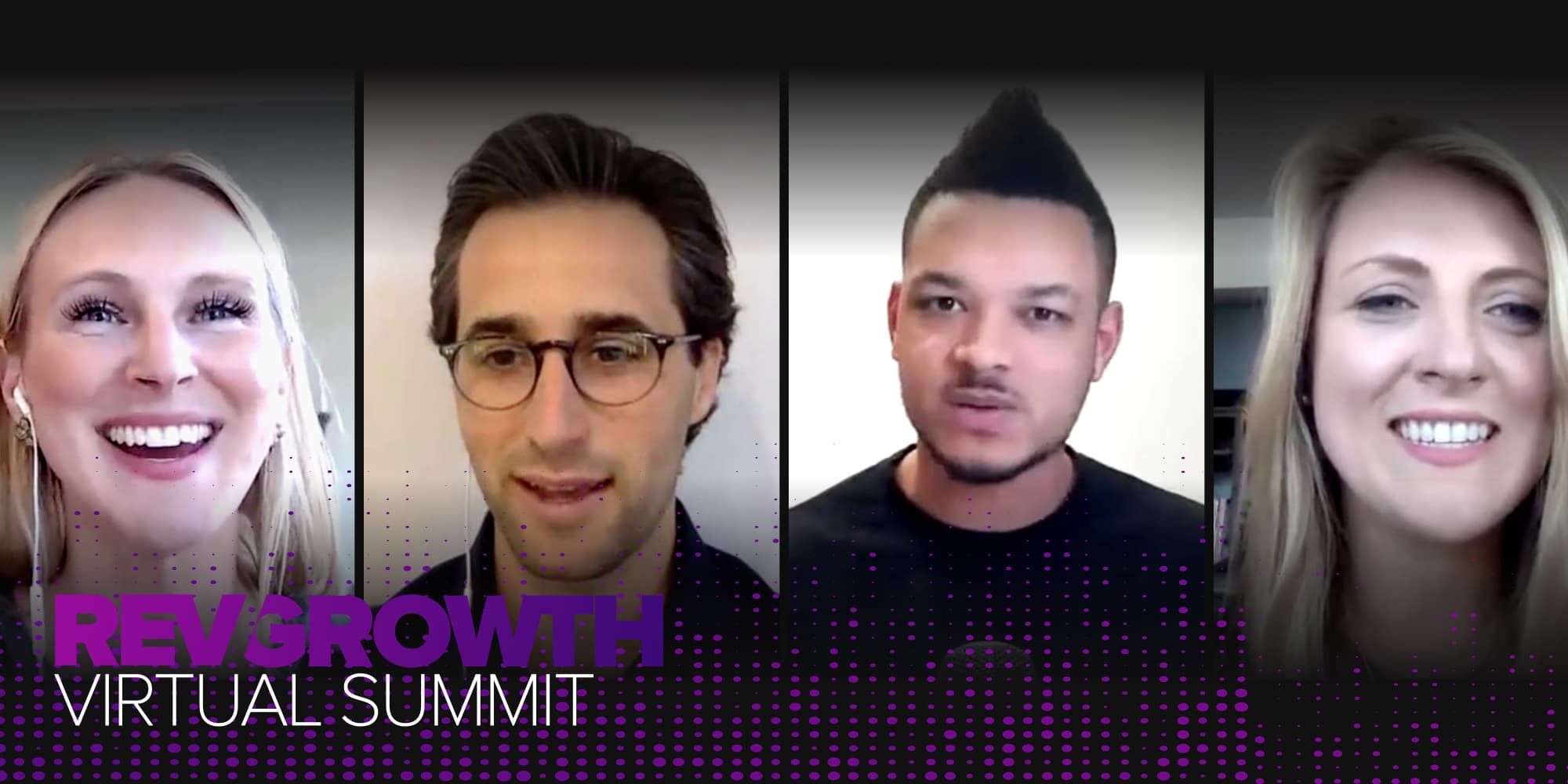
Webinars and other special events can provide a big revenue boost for your business. And it’s no wonder – these occasions are fantastic for engaging with potential leads, building out your contact list, and cementing relationships with your current customer base.
But to get the most impact from a webinar, you have to get people actually attend. To increase your chances of people signing up and attending, follow these marketing tactics to boost awareness, engage with buyers, and show them how you can help them solve a pain or problem area for their business.
1. Define Your Audience
It sounds simple enough, but trust me. It’s worth repeating. Every marketer should understand what their key demographic or ideal customer profile (ICP) is. What kind of people are most likely to purchase your products or services?
This step is useful far beyond hosting webinars. Collecting data on your customers lets you know what kind of content you should post on social media and allows you to identify trends in consumer behavior.
Once you understand who your primary demographic is, you’ll have an easier time determining what the subject of your webinar should be. You’ll also have a better idea of who to invite as guest speakers.
Ideally, your speakers will have a similar target audience to your business. You can then use speakers to promote your webinar through their own social media channels. Another way to increase engagement is to have speakers host promotions, such as giving discounts off their latest book if people sign up for the webinar.
At this step, it’s all about figuring out who will benefit the most from your webinar. From there, those people are more likely to continue engaging with your business. It’s more than just getting a one-time sale. It’s about creating long-term customer value.
2. Determine the Best Topic and Title
In-person seminars usually require a greater commitment. They typically cost money to attend, and people have to carve time out of their day to visit a physical location (and that’s if the event hasn’t already been canceled due to COVID-19).
But webinars are usually free and people can log in from the comfort of their homes. Plenty of businesses have discovered the ease of hosting webinars, and because of this, you’ve got a fair amount of competition out there. In fact, according to one survey, 61% of marketers use webinars as a major component of their content marketing strategy.
Coming up with an interesting angle is one way to stand out from the crowd. Ideally, your topic will be broad enough to appeal to a fairly large audience. However, it should still be somewhat targeted so that people have a good idea of what it is they’re signing up for.
Naturally, the topic needs to be related to your company. One straightforward tactic is to present an issue your customer may have to contend with. The topic and title of your webinar will showcase this problem and then promise to provide solutions for it. Again, this is a super simple concept – but it works.
Once you figure out a topic, you then have to come up with a catchy title. After all, when you email people about the event, you’re competing for their attention amongst dozens of other emails people receive on a given day.
The title or theme should somehow be incorporated into the subject line, so people remember it. It needs to stand out in people’s minds. Additionally, your email needs to be actionable, so it should be simple for people to sign up for the webinar directly from the message.
Did you know that companies drive up to 95% more webinar registrations with Drift’s Webinar Bot? Schedule a conversation to learn how.
3. Promote Your Event
Your business should already have a first-class email host. Some hosts allow you to send up to 400 emails per hour, which comes in handy when you need to get invites out quickly.
If your company already has an email list, that’s a great place to start. You want to send dedicated emails devoted solely to promoting your webinar.
You can also include information about the event in a weekly newsletter, but it’s likely people will not see it or simply ignore the message. If you’re sending an invitation to sign up for a webinar, make sure that’s the only call-to-action (CTA) you include in your email.
In the weeks leading up to the webinar, you should write a LinkedIn post that teases certain points the webinar will cover. You don’t want to give everything away, but it’s recommended to give people a taste of what they can expect and drum up some anticipation for the actual event.
At the end of these posts, you make sure to include a CTA to sign up for the webinar so people can sign up with as little friction as possible.
Don’t overlook social media. One out of every six minutes spent online, on average, is on a social media platform. Go to where your customers are likely to be and set up marketing campaigns there, too.
4. Map Out Your Email Campaign Sequence
Once you have your high-level promotion strategy laid out, it’s time to take it another level deeper and plan how and when you’ll send out emails to people to keep them in the loop. Remember, consistency is your friend.
There are four key steps to this process.
- During Promotion: Provide information about the webinar, and include a link for people to register.
- Post-Registration: After people register, send out follow-up emails to reduce the chances of no-shows.
- Day of Event: Amp up hype to remind people of when they need to log on.
- Post-Event: Send a thank you to attendees (and no-shows) and add a link to watch the recording. Decide what action you want attendees and no-shows to take next and set up your CTA accordingly.
Chances are, you already have this type of cadence built into your marketing automation platform. But even if you have templates already built out, it’s not an excuse to go on autopilot. Remember to have some fun with your promotions.
5. Create Video Clips to Deliver Value in Real-Time
It’s estimated that a good 78 percent of individuals watch online videos every week. And many people would rather watch a video over watching TV or reading an article.
One way you might be able to increase engagement with your emails and social media posts is to include a video clip. Just like with everything else, the video should be related to what you’ll talk about in more detail at the actual event.
One idea is to save your video content for people who actually sign up for the event. Think of it as an immediate bonus someone’s receiving for engaging with your company. They don’t have to wait until the actual webinar happens to get some good learnings. That’s providing value at every touchpoint.
6. Send Slides or a Recording to Everyone Who Registers
One final way you can market your digital event is to send recordings to registrants. Some last for over an hour and people may not remember every last thing you went over.
Sending the recording is yet another way to provide continuous value to your customers. It’s also a chance to include a personalized CTA to keep the conversation going.
The Right Marketing Campaign Makes Your Webinar All the More Valuable
There are many ways you can drive people to your company’s webinars. In addition to the steps listed above, don’t be afraid of taking risks. Experiment with other tactics to level up your marketing. Keep tabs on what works and what doesn’t so that you can continue adjusting until you find the strategy that gets you the results you’re looking for.
As people continue spending more and more time online, webinars will only grow in popularity. Now is as good of a time as ever to revisit the basics of webinar promotion so you can boost attendance and provide even more value to your customers.







